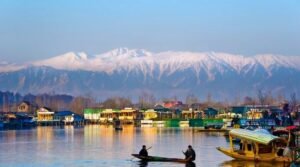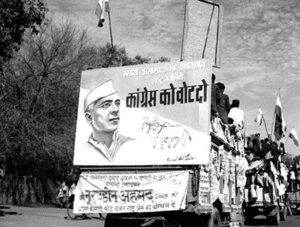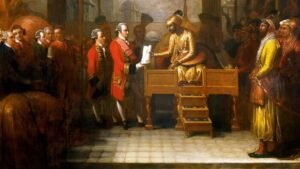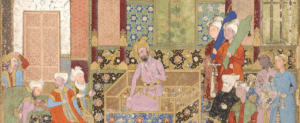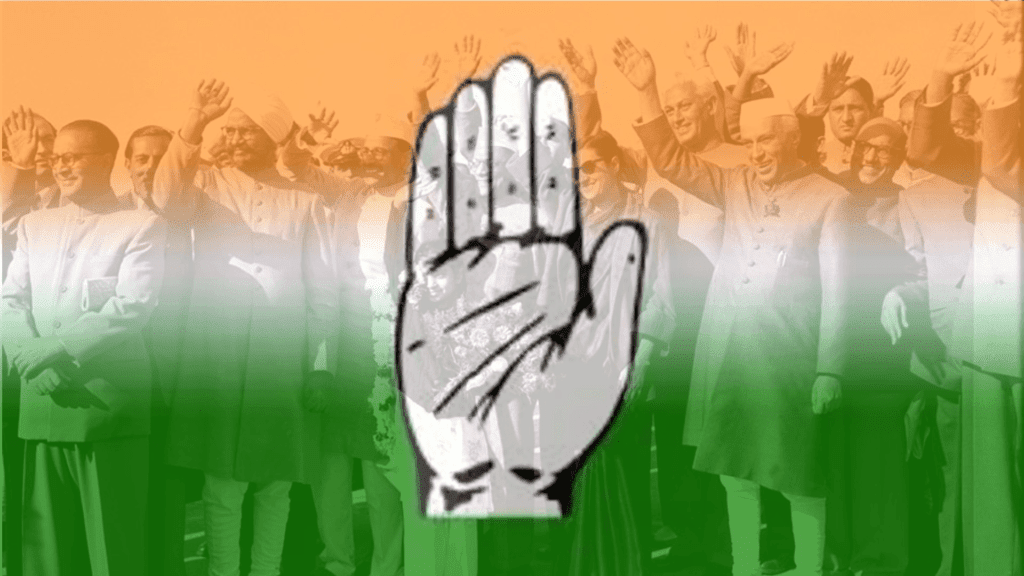
Indian National Congress – A Historical Overview
The Indian National Congress (INC) is one of the most storied political parties in the history of modern India, with a legacy intertwined with the country’s struggle for independence and its subsequent journey as a sovereign nation. Founded in the late 19th century, the Congress party became the principal leader in the fight against British colonial rule, and after independence, it played a pivotal role in shaping India’s political, social, and economic landscape. This article delves into the rich history of the Indian National Congress, exploring its origins, evolution through the pre-independence period, its dominance in post-independence India, the transformative leadership of figures like Indira Gandhi and Rajiv Gandhi, the party’s challenges under Sonia and Rahul Gandhi, and its current state of decline.
Origins of the Indian National Congress
The Indian National Congress was founded in 1885 by a retired British civil servant, Allan Octavian Hume, along with other prominent Indian leaders like Dadabhai Naoroji and Dinshaw Wacha. The formation of the INC was driven by the need to create a platform where Indian intellectuals could discuss their concerns and aspirations under British rule. The early objectives of the Congress were modest, focusing on fostering political dialogue and petitioning the British government for greater Indian representation in governance.


In its nascent years, the INC was a forum for moderate political discussion, advocating for gradual reforms rather than outright independence. The party aimed to unite Indians across different regions, languages, and religions, laying the groundwork for a national movement. The early leadership of the INC included figures like Womesh Chunder Bonnerjee, the first president of the party, and Dadabhai Naoroji, who later became the first Indian to be elected to the British Parliament.
Despite its moderate stance, the INC played a crucial role in raising political awareness among Indians. The annual sessions of the Congress became a platform for discussing issues such as civil rights, economic reforms, and the need for a more significant Indian presence in the administrative machinery. The party’s influence grew steadily, and it began to attract leaders who would later become icons of the Indian independence movement.
The Indian National Congress Pre-Independence Era
As the 20th century dawned, the Indian National Congress underwent a significant transformation. The party, which initially sought gradual reforms, began to adopt a more assertive stance towards British rule. This period marked the emergence of two factions within the Congress – the moderates, led by leaders like Gopal Krishna Gokhale, who believed in constitutional methods of protest, and the extremists, led by Bal Gangadhar Tilak, who advocated for more direct action against the British authorities.

The first major test of the INC’s resolve came with the Partition of Bengal in 1905. The British decision to divide Bengal on religious lines was met with widespread outrage, leading to the Swadeshi Movement, which called for the boycott of British goods. This movement marked the beginning of a more radical phase in the Congress’s approach, with leaders like Tilak, Bipin Chandra Pal, and Lala Lajpat Rai pushing for self-rule or Swaraj.
The INC’s stance became increasingly militant during World War I. The war had a profound impact on the Indian economy, and the INC capitalized on the growing discontent to demand greater autonomy for Indians. It was during this time that Mahatma Gandhi emerged as a central figure in the Congress. His philosophy of non-violence and civil disobedience struck a chord with millions of Indians and transformed the INC into a mass movement.
Under Gandhi’s leadership, the INC launched a series of mass protests against British rule. The Non-Cooperation Movement of 1920 was the first of these, where Gandhi called for the boycott of British institutions, goods, and services. The movement saw widespread participation across India, but it was abruptly called off by Gandhi following the violent Chauri Chaura incident in 1922.
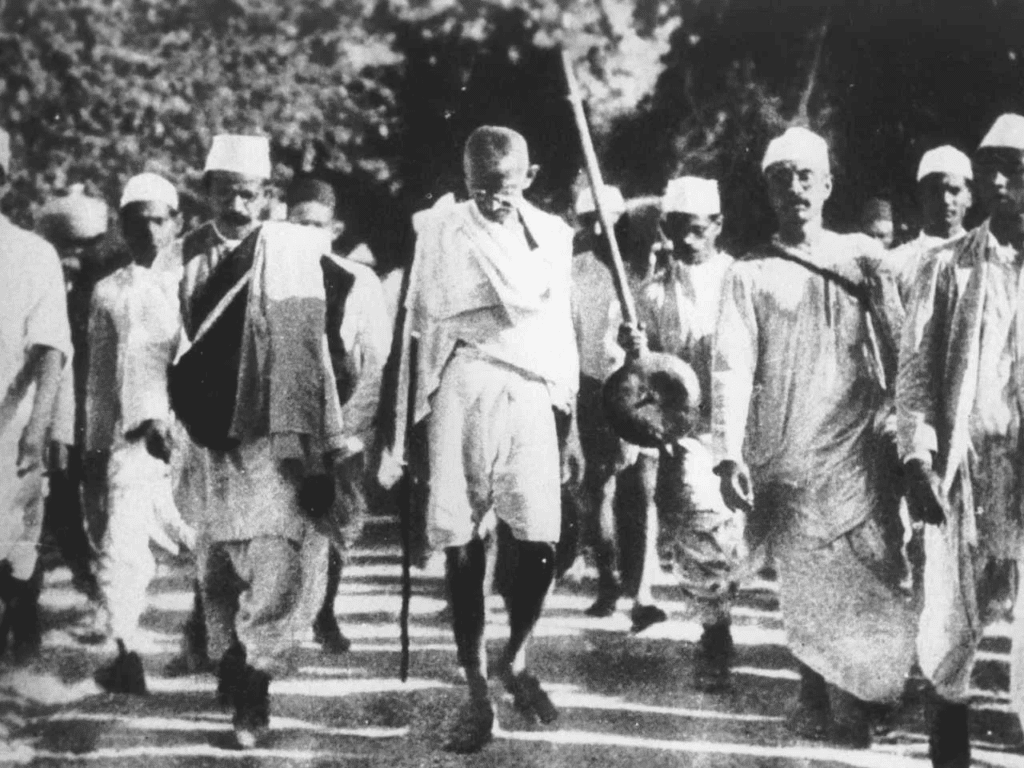
The Civil Disobedience Movement, launched in 1930, was another significant milestone in the Congress’s fight for independence. The movement was marked by the famous Dandi March, where Gandhi and his followers walked 240 miles to make salt in defiance of British laws. The Civil Disobedience Movement brought the Indian struggle for independence to international attention and intensified the pressure on the British government.
As World War II loomed, the INC found itself at a crossroads. The British decision to involve India in the war without consulting Indian leaders led to the Quit India Movement in 1942. The movement, characterized by the slogan “Do or Die,” called for an immediate end to British rule. The British responded with a brutal crackdown, arresting most of the Congress leadership, including Gandhi, Nehru, and Patel. However, the Quit India Movement marked the beginning of the end for British rule in India.
By the time World War II ended, the British government was exhausted and unable to maintain control over its colonies. The INC, under the leadership of figures like Jawaharlal Nehru, Sardar Vallabhbhai Patel, and Maulana Abul Kalam Azad, engaged in negotiations with the British for India’s independence. These negotiations culminated in the partition of India and the creation of Pakistan in 1947. The INC’s role in these negotiations was crucial, although the partition left deep scars on the subcontinent.

The Indian National Congress Post-Independence
With India’s independence in 1947, the Indian National Congress transitioned from a revolutionary movement to the ruling party of the newly sovereign nation. The INC, under the leadership of Jawaharlal Nehru, took on the immense task of nation-building. Nehru, who became India’s first Prime Minister, envisioned a secular, democratic, and socialist India. His policies focused on industrialization, the establishment of a mixed economy, and the promotion of science and technology.

Nehru’s tenure was marked by significant achievements, including the establishment of a parliamentary democracy, the drafting of the Indian Constitution, and the laying of the foundations for India’s scientific and technological advancements. However, his government also faced significant challenges, such as the integration of princely states, communal riots, and the rehabilitation of millions of refugees from partition.
The INC during Nehru’s era also championed the Non-Aligned Movement, which sought to keep newly independent nations like India out of the Cold War rivalry between the US and the Soviet Union. Nehru’s foreign policy was driven by ideals of anti-colonialism and peaceful coexistence, though it faced setbacks such as the Sino-Indian War of 1962, which exposed the vulnerabilities of India’s defense capabilities.
After Nehru’s death in 1964, the Congress party went through a period of instability. Lal Bahadur Shastri, who succeeded Nehru, led the country during the Indo-Pak War of 1965 but died in office shortly after. His death paved the way for Indira Gandhi, Nehru’s daughter, to become the Prime Minister in 1966, marking the beginning of a new era in the INC’s history.
Indira Gandhi’s Era
Indira Gandhi’s rise to power marked a period of significant transformation for both the Congress party and India. Initially seen as a weak leader, often referred to as a “goongi gudiya” (dumb doll) by her critics, Indira soon proved her mettle by taking decisive actions that would define her leadership.

One of her early major initiatives was the Green Revolution, which significantly increased agricultural production in India, particularly in the northern states of Punjab, Haryana, and Uttar Pradesh. This revolution not only made India self-sufficient in food grains but also cemented Indira Gandhi’s image as a leader committed to the welfare of the common people.
Indira Gandhi also nationalized 14 major banks in 1969, a move aimed at ensuring that banking facilities reached the rural and poor populations, aligning with her pro-poor agenda. These actions strengthened her political position, allowing her to establish a more authoritarian control over the Congress party, often sidelining senior leaders and promoting those loyal to her.
The 1971 Bangladesh Liberation War was a defining moment in Indira Gandhi’s leadership. The INC under her guidance played a crucial role in supporting the East Pakistani (now Bangladeshi) struggle for independence from West Pakistan. The war, resulting in the creation of Bangladesh, bolstered Indira Gandhi’s popularity and solidified her image as a strong and decisive leader.
However, Indira Gandhi’s most controversial decision came in 1975 when she declared a state of Emergency, citing internal unrest. The Emergency, which lasted for 21 months, saw the suspension of civil liberties, censorship of the press, and mass arrests of political opponents. The period is often criticized for the excesses committed by the government, including forced sterilizations and the demolition of slums in Delhi.
The Emergency period deeply affected the Indian National Congress, leading to a loss of public trust and electoral support. The 1977 general elections, held after the Emergency was lifted, resulted in a massive defeat for the INC, marking the first time the party lost power at the national level.
Indira Gandhi’s return to power in 1980 after a brief stint of the Janata Party government was marred by increasing unrest in Punjab. The demand for a separate Sikh state led to the rise of militant groups, and in 1984, Indira Gandhi ordered Operation Blue Star, a military action to flush out militants from the Golden Temple in Amritsar. The operation, while successful in its immediate objective, alienated a large section of the Sikh community and led to her assassination later that year by her Sikh bodyguards.
Indira Gandhi’s era was one of the most tumultuous in the history of the Indian National Congress. Her policies and actions had a profound impact on the party and the country, shaping the political landscape of India for decades to come.
Rajiv Gandhi’s Leadership
The assassination of Indira Gandhi in 1984 catapulted her son, Rajiv Gandhi, into the position of Prime Minister. Rajiv Gandhi, who had previously been a reluctant politician, was thrust into leadership at a time of national crisis. His initial tenure was marked by a wave of sympathy that gave the Congress party a landslide victory in the 1984 elections.
Rajiv Gandhi’s leadership was characterized by a vision of modernizing India. He was a strong advocate of technology and telecommunications, and under his government, India saw the beginning of the IT and telecommunications revolutions. Rajiv’s government initiated policies aimed at liberalizing the economy, reducing bureaucratic red tape, and encouraging foreign investment.
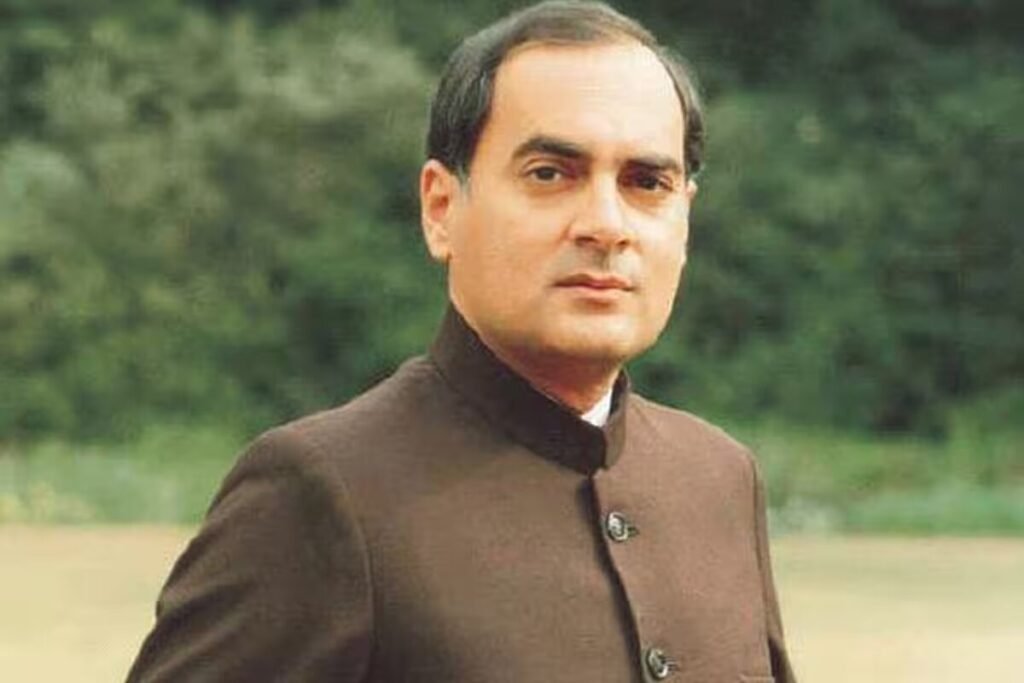
However, Rajiv Gandhi’s tenure was not without challenges. The Bofors scandal, which involved allegations of corruption in defense procurement, tarnished his image and led to widespread criticism. The scandal became a significant issue in Indian politics and contributed to the decline in support for the Congress party.
Rajiv Gandhi also faced challenges in foreign policy, most notably with India’s involvement in the Sri Lankan Civil War. The decision to send Indian Peace Keeping Forces (IPKF) to Sri Lanka in 1987 was initially intended to broker peace between the Sri Lankan government and the Tamil insurgents. However, it turned into a protracted and bloody conflict, leading to significant casualties and eventual withdrawal of Indian forces.
Rajiv Gandhi’s tenure ended with his assassination in 1991 during an election campaign. His death marked the end of the Nehru-Gandhi dynasty’s direct leadership in Indian politics for a time, and the Congress party struggled to maintain its dominance in the years that followed.
Sonia Gandhi and the Rahul Gandhi Era
After Rajiv Gandhi’s assassination, the Congress party went through a period of turbulence. Sonia Gandhi, Rajiv’s widow, initially stayed away from politics, but she eventually stepped in to revive the party. Under her leadership, the INC saw a resurgence, culminating in the formation of the United Progressive Alliance (UPA) and its victory in the 2004 general elections.
Sonia Gandhi’s leadership style was characterized by a focus on consensus-building and coalition politics. The UPA government, led by Prime Minister Manmohan Singh, implemented several significant policies, including the Mahatma Gandhi National Rural Employment Guarantee Act (MGNREGA) and the Right to Information (RTI) Act. These initiatives aimed at social welfare and transparency in governance helped the Congress maintain its relevance in Indian politics.
However, the second term of the UPA government (2009-2014) was marred by several high-profile corruption scandals, including the 2G spectrum scam and the Commonwealth Games scandal. These issues, combined with rising anti-incumbency sentiment, led to a significant decline in the Congress’s popularity.
Rahul Gandhi, who took on a more prominent leadership role during this period, faced criticism for his inability to connect with the electorate and effectively lead the party. Despite attempts to reform the party and its image, the INC suffered a historic defeat in the 2014 general elections, securing only 44 seats in the Lok Sabha.
The 2019 elections further solidified the decline of the Congress party, with the BJP securing a second consecutive term with a massive mandate. Rahul Gandhi’s leadership was called into question, and he eventually stepped down as the party president, paving the way for his mother, Sonia Gandhi, to take over as interim president.

Decline and Irrelevance of the Indian National Congress
The decline of the Indian National Congress has been a topic of extensive analysis and debate. Several factors have contributed to the party’s diminishing relevance in Indian politics. One of the primary reasons is the rise of regional parties, which have eroded the Congress’s traditional vote banks in various states. Additionally, the emergence of the Bharatiya Janata Party (BJP) as a dominant force in national politics has significantly marginalized the INC.
Internal divisions and a lack of strong leadership have also plagued the Congress party. The leadership crisis has been exacerbated by the perception that the party remains overly reliant on the Nehru-Gandhi family, leading to accusations of dynastic politics. This has alienated younger voters and led to a loss of credibility among large sections of the electorate.

The Congress’s inability to present a coherent and compelling narrative in the face of BJP’s aggressive and nationalist agenda has further contributed to its decline. The party has struggled to redefine its ideology and reconnect with the masses, leading to a series of electoral defeats at both the state and national levels.
As of now, the Indian National Congress faces an existential crisis. The party has been reduced to a shadow of its former self, struggling to stay relevant in a rapidly changing political landscape. While there are efforts within the party to rejuvenate its leadership and policy direction, the path to revival remains uncertain.
Conclusion
The Indian National Congress has played a central role in shaping the history of modern India. From leading the country to independence to governing it for several decades, the INC’s legacy is deeply intertwined with the nation’s development. However, the party’s journey has also been marked by significant challenges, particularly in the post-independence era.
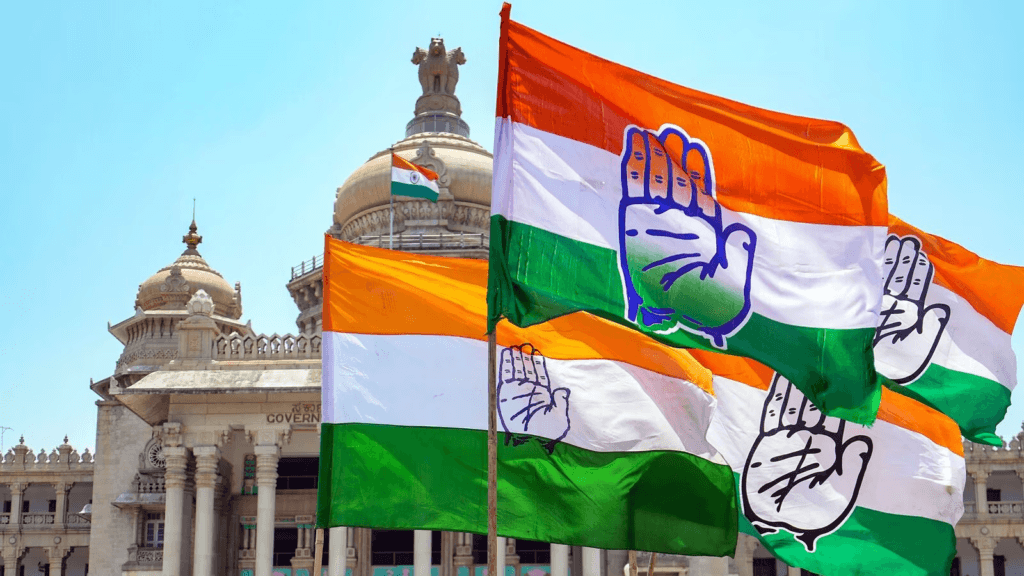
The decline of the Indian National Congress in recent years raises important questions about its future and its ability to adapt to the changing dynamics of Indian politics. While the party’s historical significance cannot be denied, its relevance in contemporary politics will depend on its ability to evolve, reconnect with the electorate, and provide a credible alternative to the current political establishment.
The legacy of the INC, with its storied past and its present struggles, continues to be a subject of great interest and debate. Whether the Congress can regain its footing and once again become a dominant force in Indian politics remains to be seen.
The Indian National Congress, once a beacon of hope and change, has experienced a decline in recent years, marked by leadership crises and electoral setbacks. While it remains an iconic part of India’s history, its current situation raises questions about its ability to regain relevance in the ever-evolving Indian political landscape. Whether the INC can reinvent itself and recapture its former glory remains a topic of speculation and debate in India’s political discourse.
References and Bibliography
Books and Articles
- Brown, Judith M. Nehru: A Political Life. Yale University Press, 2003.
- Guha, Ramachandra. India After Gandhi: The History of the World’s Largest Democracy. HarperCollins, 2007.
- Noorani, A.G. The Kashmir Dispute 1947-2012. Oxford University Press, 2014.
- Brass, Paul R. The Politics of India Since Independence. Cambridge University Press, 1994.
- Tharoor, Shashi. The Great Indian Novel. Penguin Books, 1989.
- Khosla, G.D. Memory’s Gay Chariot. Thomson Press, 1974.
- Mitra, Subrata K., et al. Politics in India: Structure, Process, and Policy. Routledge, 2006.
- Hasan, Zoya. Congress After Indira: Policy, Power, Political Change 1984-2009. Oxford University Press, 2012.
- Baru, Sanjaya. The Accidental Prime Minister: The Making and Unmaking of Manmohan Singh. Penguin India, 2014.
- Das, Gurcharan. India Unbound: The Social and Economic Revolution from Independence to the Global Information Age. Anchor Books, 2002.
- Maheshwari, S.R. The Post-Independence Indian National Congress: From Dominance to Decline. Vikas Publishing House, 1997.
Reports and Documents
- Indian National Congress Party Constitution, 2010.
- Government of India, White Paper on the Punjab Agitation, 1984.
- Indian Government Archive, Documents on the Bangladesh Liberation War 1971.
- Lok Sabha Debates, Records of Parliamentary Debates on the Emergency, 1975-1977.
Online Sources
- Bhattacharya, Sabyasachi. “Revisiting the Formation of the Indian National Congress,” Economic and Political Weekly, Vol. 20, No. 18, 1985. JSTOR.
- “Operation Blue Star: A Short History,” BBC News, 5 June 2014. www.bbc.com.
- “The 2G Scam and its Aftermath,” The Hindu, 27 February 2012. www.thehindu.com.
- “Rahul Gandhi: Challenges and Prospects,” The Times of India, 10 May 2019. timesofindia.indiatimes.com.
- “A Brief History of the Congress Party,” NDTV, 18 December 2017. www.ndtv.com.

